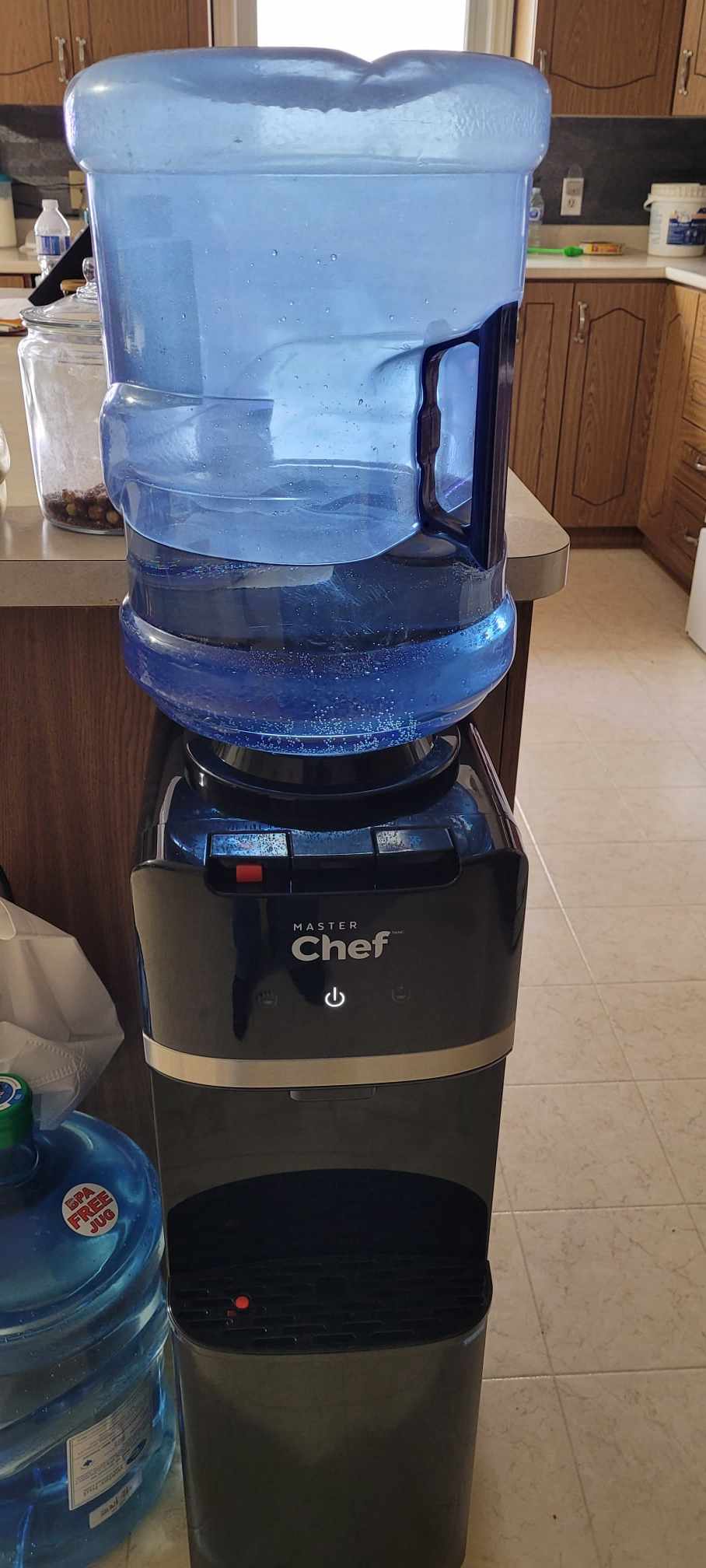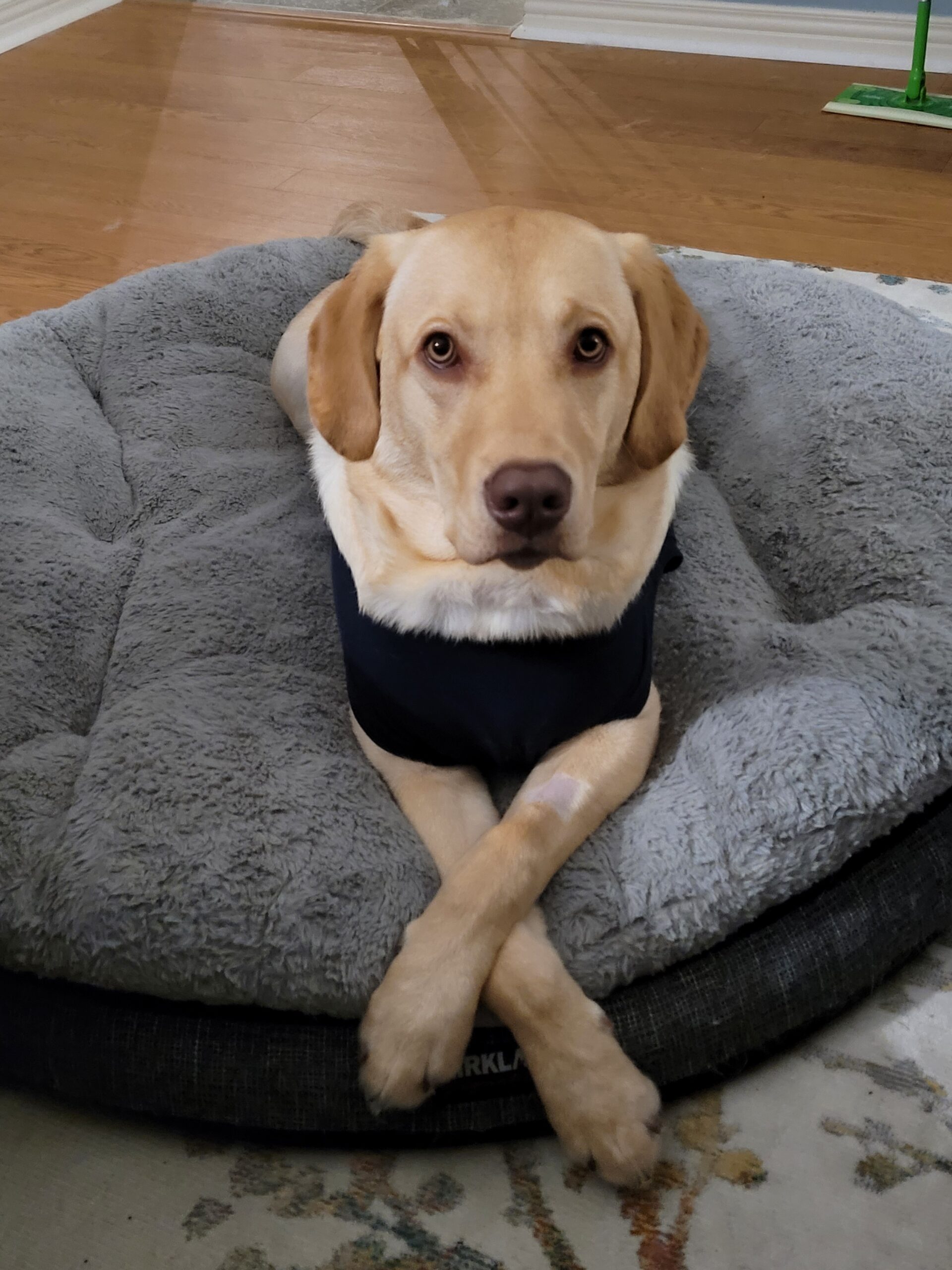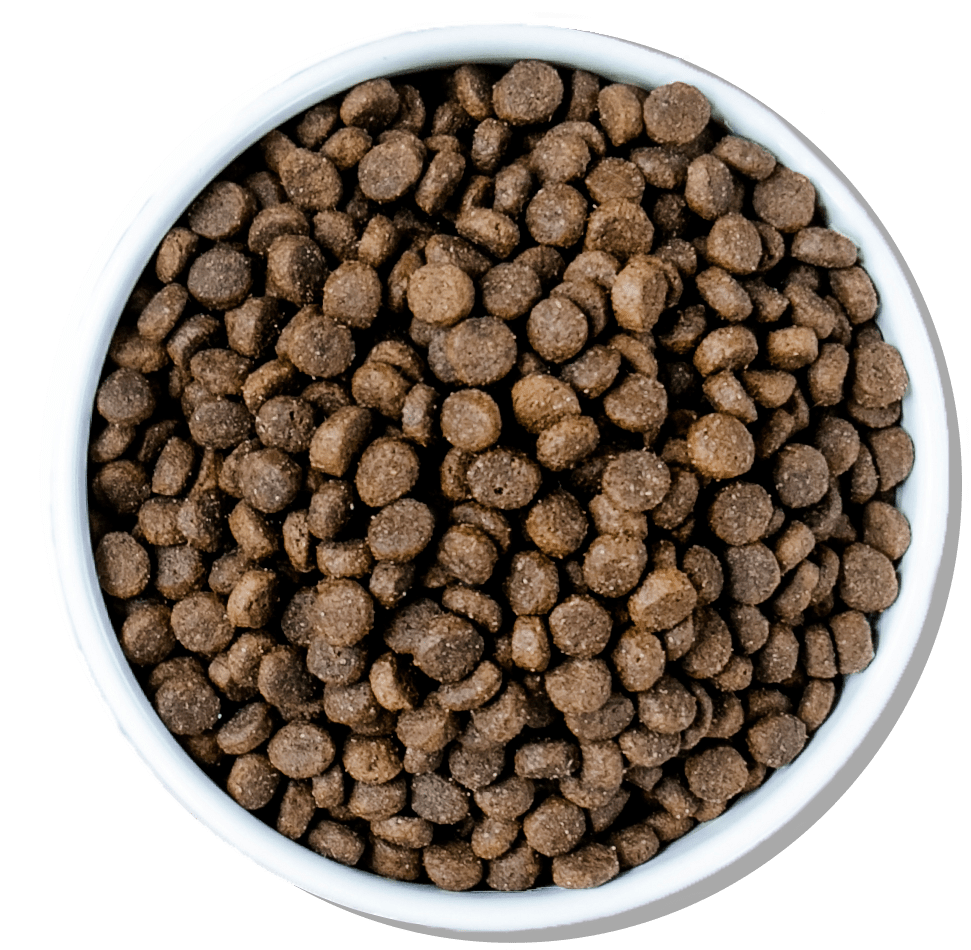
My Labrador Retriever won’t wag their tail!
It’s the strangest thing, after yesterday’s trip to the lake my Labrador Retriever won’t wag their tail! There are many dangers during swimming season, here is a discussion of them.
There is a condition known as “limber tail” or “swimmer’s tail” that may present itself with your Labrador. Actually any dog or animal with a tail may experience this condition but it appears to be more common in working breed dogs such as the Labrador Retriever, Beagles, Golden Retrievers, English Pointers, Foxhounds and other hunting dogs and working dogs. Some people notice it when their dogs are swimming and others simply notice the tail going limp when the Lab is walking around the house or in the back yard. It is a muscle injury which prevents your Lab’s tail to be held horizontal. It could be that your dog is in pain and doesn’t want to use their tail or it could be an inability to wag or move their tail.
The condition is called acute caudal myopathy and is caused by damage to the bony vertebrae of the tail and/or damage to the surrounding coccygeal muscles and ligaments. It can also be caused by the spinal passage of the tail narrowing causing pain. Frequently a Lab may not show signs of the tail being a problem the day of the injury rather they will wake up in pain the next day and refrain from moving the tail because of the pain. It is common to see this injury 24 hours after a hunting/retrieving session or vigorous play especially if it is in combination with cold water.
The most common ways this occurs is because of over use or over exertion and can be caused further by exposure to swimming in cold water or weather. Limber tail is also known as:
cold water tail
limp tail
broken tail
dead tail
rudder tail
dead tail
swimmer’s tail
broken wag
What does your dog’s tail look like? Well there are various ways this condition could present itself. At first you may not notice your dog not wagging their tail at all, Limber tail syndrome may present itself by your Lab not being able to get comfortable when in a sitting position. Your vet will often prescribe anti inflammatory drugs to make them more comfortable.
You may also first notice it as your dog appearing to have difficulties balancing because they use their tails for balance. This lack of balance could be as they are getting up to stand from a lying or seated position. Or your Lab’s tail may appear limp between their legs or appear to raise about half way up and fall back down. Other symptoms of this injury is your Lab not wanting to eat or even squat when they have to poop because of the pain.
There are other conditions which may also present themselves or “look like” limber tail. They include:
Prostate disease
Lower back pain from a spinal issue
Infection or inflammation of the anal glands
So it’s important that you consult your veterinarian and have a vet visit as soon as you notice these symptoms so they can be addressed properly. Simple limber tail is normally treated with rest and an anti inflammatory medication. If your veterinarian determines your Lab’s condition is more complicated they will advise you the most appropriate course of action. Human medications used for inflammation are not appropriate for Labs so please don’t try to treat his pain symptoms by using medicine you have at home.
Let’s not forget that dogs will be dogs! If your Labrador Retriever develops this condition and you get professional advice for your lab to recover, be sure that after a complete recovery that you don’t have the inclination to bubble wrap your dog. Life happens, accidents happen, injuries happen. You can be sure to help prevent limber tail by easing your Lab into activity gradually. Heading out to the lake and spending 5 hours retrieving in the cold waters of March or April may not be the best way to do that. But shorter, more frequent sessions will help him build up to having longer activity sessions. After your dog heals from their symptoms, they will still want to run and play like they always did, and for your Labrador Retriever they will want to swim! Let your Lab swim safely, just not too much all at once.



